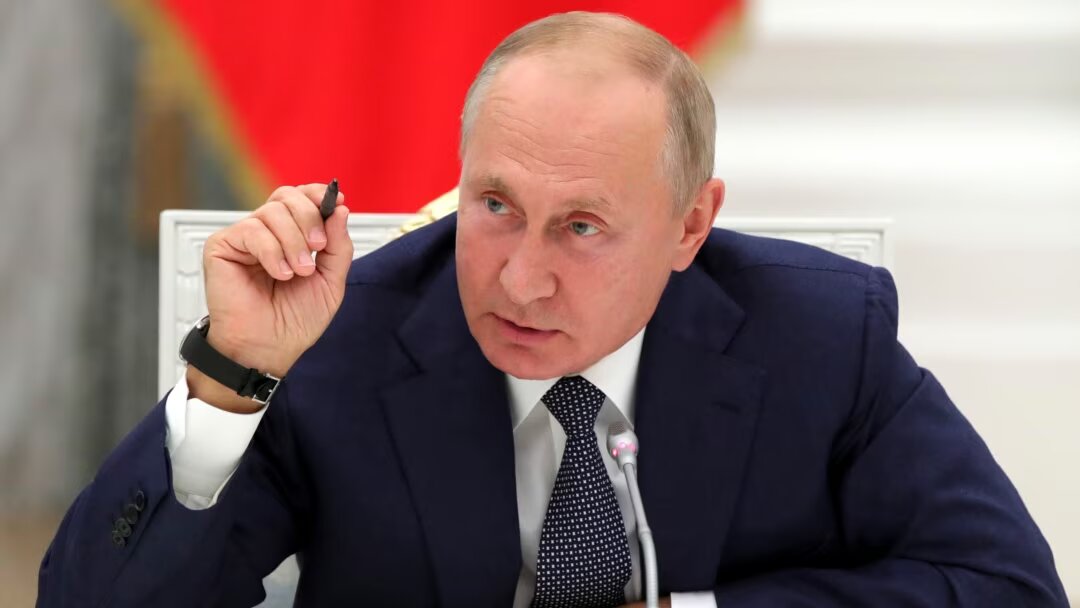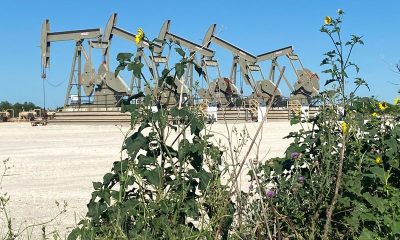Economy
Russia’s Putin rebuts key elements of African peace plan for Ukraine

Russian President Vladimir Putin on Saturday gave African leaders seeking to mediate in the war in Ukraine a list of reasons why he believed many of their proposals were misguided, pouring cold water on a plan already largely dismissed by Kyiv.
The African leaders were seeking agreement on a series of “confidence building measures”, even as Kyiv last week began a counteroffensive to push back Russian forces from the swathes of southern and eastern Ukraine that they occupy.
Ukrainian President Volodymyr Zelenskiy said after meeting them in Kyiv on Friday that peace talks would require Moscow to withdraw its forces from occupied Ukrainian territory, something Russia has said is not negotiable.
Putin opened Saturday’s talks with representatives of Senegal, Egypt, Zambia, Uganda, Congo Republic, Comoros and South Africa in a palace near St Petersburg by stressing Russia’s commitment to the continent.
But after presentations from the Comoran, Senegalese and South African presidents, he stepped in to challenge the assumptions of the plan – predicated on acceptance of internationally recognised borders – before the round of statements could go any further.
Putin reiterated his position that Ukraine and its Western allies had started the conflict long before Russia sent its armed forces over the border in February last year, something they deny.
He said the West, not Russia, was responsible for a sharp rise in global food prices early last year that has hit Africa especially hard.
He told the delegation that Ukrainian grain exports from Black Sea ports that Russia has permitted for the past year were doing nothing to alleviate Africa’s difficulties with high food prices because they had largely gone to wealthy countries.
And he said Russia had never refused talks with the Ukrainian side, which had been blocked by Kyiv. Moscow has, however, repeatedly said any peace must allow for “new realities”, meaning its declared annexation of five Ukrainian provinces, four of which it only partially controls – a red line for Kyiv.
Russian Foreign Minister Sergei Lavrov said in televised remarks that Moscow shared the “main approaches” of the African plan, but Kremlin spokesman Dmitry Peskov was quoted by Russian news agencies as saying it was “difficult to realise”.
Peskov said Putin had shown interest in the plan, whose 10 points South African President Cyril Ramaphosa laid out in his presentation, and Russia would continue dialogue with the African countries.
Lavrov said they had not brought the Russian leader any message from Zelenskiy.
Putin said Moscow was “open to constructive dialogue with anyone who wants to establish peace on the principles of fairness and acknowledgement of the legitimate interests of the parties”.
There was no immediate word on the bilateral talks that Ramaphosa, host of a summit in August featuring Brazil, Russia, India, China and South Africa, had said he would have with Putin.
Since the International Criminal Court indicted Putin in March on war crimes charges – which he rejects – South Africa, as a member of the court, finds itself in the awkward position of being obliged to arrest him if he sets foot there.
Economy
Russian central bank says it needs months to make sure CPI falling before rate cuts -RBC


© Reuters. Russian Central Bank Governor Elvira Nabiullina attends a news conference in Moscow, Russia June 14, 2019. REUTERS/Shamil Zhumatov/File Photo
MOSCOW (Reuters) – Russia’s central bank will need two to three months to make sure that inflation is steadily declining before taking any decision on interest rate cuts, the bank’s governor Elvira Nabiullina told RBC media on Sunday.
The central bank raised its key interest rate by 100 basis points to 16% earlier in December, hiking for the fifth consecutive meeting in response to stubborn inflation, and suggested that its tightening cycle was nearly over.
Nabiullina said it was not yet clear when exactly the regulator would start cutting rates, however.
“We really need to make sure that inflation is steadily decreasing, that these are not one-off factors that can affect the rate of price growth in a particular month,” she said.
Nabiullina said the bank was taking into account a wide range of indicators but primarily those that “characterize the stability of inflation”.
“This will take two or three months or more – it depends on how much the wide range of indicators that characterize sustainable inflation declines,” she said.
The bank will next convene to set its benchmark rate on Feb. 16.
The governor also said the bank should have started monetary policy tightening earlier than in July, when it embarked on the rate-hiking cycle.
Economy
China identifies second set of projects in $140 billion spending plan


© Reuters. FILE PHOTO: Workers walk past an under-construction area with completed office towers in the background, in Shenzhen’s Qianhai new district, Guangdong province, China August 25, 2023. REUTERS/David Kirton/File Photo
SHANGHAI (Reuters) – China’s top planning body said on Saturday it had identified a second batch of public investment projects, including flood control and disaster relief programmes, under a bond issuance and investment plan announced in October to boost the economy.
With the latest tranche, China has now earmarked more than 800 billion yuan of its 1 trillion yuan ($140 billion) in additional government bond issuance in the fourth quarter, as it focuses on fiscal steps to shore up the flagging economy.
The National Development and Reform Commission (NDRC) said in a statement on Saturday it had identified 9,600 projects with planned investment of more than 560 billion yuan.
China’s economy, the world’s second largest, is struggling to regain its footing post-COVID-19 as policymakers grapple with tepid consumer demand, weak exports, falling foreign investment and a deepening real estate crisis.
The 1 trillion yuan in additional bond issuance will widen China’s 2023 budget deficit ratio to around 3.8 percent from 3 percent, the state-run Xinhua news agency has said.
“Construction of the projects will improve China’s flood control system, emergency response mechanism and disaster relief capabilities, and better protect people’s lives and property, so it is very significant,” the NDRC said.
The agency said it will coordinate with other government bodies to make sure that funds are allocated speedily for investment and that high standards of quality are maintained in project construction.
($1 = 7.1315 renminbi)
Economy
Russian central bank says it needs months to make sure CPI falling before rate cuts -RBC


© Reuters. Russian Central Bank Governor Elvira Nabiullina attends a news conference in Moscow, Russia June 14, 2019. REUTERS/Shamil Zhumatov/File Photo
MOSCOW (Reuters) – Russia’s central bank will need two to three months to make sure that inflation is steadily declining before taking any decision on interest rate cuts, the bank’s governor Elvira Nabiullina told RBC media on Sunday.
The central bank raised its key interest rate by 100 basis points to 16% earlier in December, hiking for the fifth consecutive meeting in response to stubborn inflation, and suggested that its tightening cycle was nearly over.
Nabiullina said it was not yet clear when exactly the regulator would start cutting rates, however.
“We really need to make sure that inflation is steadily decreasing, that these are not one-off factors that can affect the rate of price growth in a particular month,” she said.
Nabiullina said the bank was taking into account a wide range of indicators but primarily those that “characterize the stability of inflation”.
“This will take two or three months or more – it depends on how much the wide range of indicators that characterize sustainable inflation declines,” she said.
The bank will next convene to set its benchmark rate on Feb. 16.
The governor also said the bank should have started monetary policy tightening earlier than in July, when it embarked on the rate-hiking cycle.

 Forex2 years ago
Forex2 years agoForex Today: the dollar is gaining strength amid gloomy sentiment at the start of the Fed’s week

 Forex2 years ago
Forex2 years agoHow is the Australian dollar doing today?

 Forex1 year ago
Forex1 year agoUnbiased review of Pocket Option broker

 Forex2 years ago
Forex2 years agoDollar to pound sterling exchange rate today: Pound plummeted to its lowest since 1985

 Cryptocurrency2 years ago
Cryptocurrency2 years agoWhat happened in the crypto market – current events today

 World2 years ago
World2 years agoWhy are modern video games an art form?

 Stock Markets2 years ago
Stock Markets2 years agoMorgan Stanley: bear market rally to continue

 Economy2 years ago
Economy2 years agoCrude oil tankers double in price due to EU anti-Russian sanctions

































